OpenAI has experienced another surge. This is the fourth time in the past month. Riding on the OpenAI wave, the stock price can skyrocket. In just one month, OpenAI has secured 26 gigawatts of computing power from Nvidia, AMD, and Broadcom.
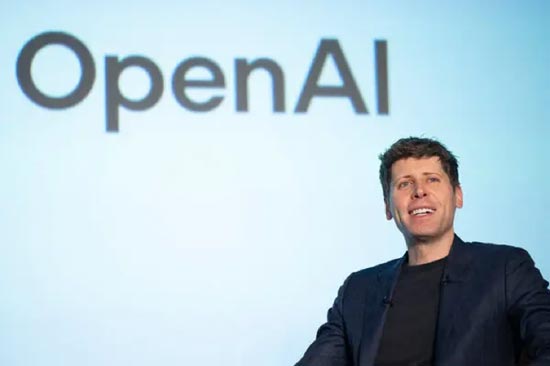
Broadcom's stock price surged twice. Semiconductor giant Broadcom's stock price surged 10% on Monday, bringing its market capitalization to nearly $1.7 trillion, surpassing TSMC to become the second-largest semiconductor company by market capitalization, after Nvidia. Broadcom, led by Hock Tan, has also benefited significantly from this AI boom, with its stock price doubling this year.
This time, driving Broadcom's stock price surge is once again the wealth-making legend that is OpenAI. This generative AI giant has not only surpassed $500 billion in valuation, making it the world's most valuable startup, but also earned the reputation of "golden fingers." Anyone who strikes a partnership with them will see their stock price soar.
Broadcom's stock price surged after the company announced a strategic partnership with OpenAI. The two companies will jointly deploy a custom 10-gigawatt (GW) AI chip. OpenAI will design the AI chip and work with Broadcom on its development and deployment. Unlike the previous deal between Nvidia and AMD, this collaboration between OpenAI and Broadcom does not involve investment or subsidies.
According to press releases from both companies, OpenAI will use these self-developed chips and systems to directly integrate its cutting-edge models and product development experience into hardware products, unleashing new levels of computing power and intelligence. The project is expected to begin deployment and improve the network system in the second half of 2026, with completion by the end of 2029.
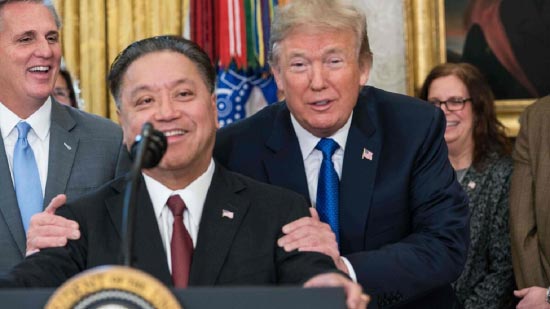
In fact, this is the second time Broadcom's stock price has surged due to OpenAI. Last month, after Broadcom released its financial report, Hock Tan announced a mysterious new customer that had committed to a new order of up to $10 billion. Market speculation that this new customer was OpenAI drove Broadcom's stock price up 16%.
Now the two companies have officially announced their partnership. While this was already known news, it still excited investors, driving Broadcom's stock price into a second wave of growth. Tan Hock Yang has effectively leveraged OpenAI as a stock-price driver, truly killing two birds with one stone.
Anyone who follows OpenAI will see growth.
Over the past month, OpenAI has continuously announced several blockbuster new deals worth hundreds of billions of dollars, securing up to 26 gigawatts of computing power from Nvidia, AMD, and Broadcom. While driving up the stock prices of cloud service providers and chip giants, Altman has also secured the best possible terms for himself.
Last month, OpenAI announced a massive $300 billion cloud services deal with Oracle over the next five years. Oracle's stock price soared 36% in a single day, its largest gain in over three decades, and its market capitalization surged by $250 billion, briefly exceeding $900 billion.
A few weeks ago, OpenAI announced a strategic investment agreement with Nvidia. Nvidia plans to invest up to $100 billion in OpenAI, supporting OpenAI's purchase of Nvidia AI processors to build a data center cluster costing hundreds of billions of dollars. On the day the deal was announced, Nvidia's market capitalization surged by over $200 billion, exceeding $4.5 trillion.
A week ago, OpenAI and AMD announced a strategic partnership: OpenAI will deploy a total of 6 gigawatts (GW) of AMD processors over the next few years, with the first 1 GW expected to begin in the second half of 2026, using AMD's upcoming MI450 series. This news spurred AMD's stock price to climb 35% last week, sending its market capitalization soaring to over $350 billion.
In just over a month, OpenAI has secured four major partnerships: cloud infrastructure, AI processor procurement, and joint development of its own chips. These agreements not only secure future computing power and diversify its processor supplier base, but also include plans to build its own AI infrastructure.
Altman's ambitions extend beyond this. In an interview with the media in August of this year, he envisioned OpenAI's expansion into consumer hardware, brain-computer interfaces, and social media. At the time, he stated that OpenAI would spend trillions of dollars on data center construction in the "near future" and hinted that the company would be interested in acquiring Google if the US government forced it to sell its Chrome browser.
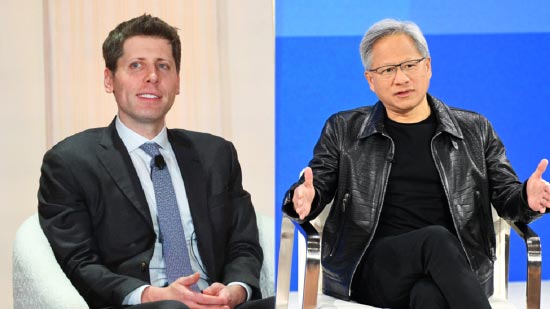
Ultraman aims to build OpenAI into a full-stack AI giant like Google, a behemoth spanning large models, consumer hardware, processors, social platforms, and data centers. If these plans pan out, OpenAI's valuation could potentially increase several-fold, reaching trillions of dollars, on par with Google, Microsoft, and Apple.
Even Musk is sour.
However, behind this AI leap forward, another risk looms: OpenAI has already signed contracts worth hundreds of billions of dollars. As a startup, does it really have the funds to pay for them? If it lacks sufficient funds and continues to sign exorbitant contracts that it can't fulfill, driving up its valuation and the stock prices of AI companies in the capital market, is there a massive bubble behind the current AI craze?
Citigroup analysts estimate that every gigawatt of computing power added by OpenAI requires approximately $50 billion in infrastructure investment. Therefore, OpenAI's latest partnership with chip manufacturers is expected to generate approximately $1.3 trillion in cumulative capital expenditures by 2030.
OpenAI is undoubtedly the most well-funded startup in history, with its funding and valuation continually breaking records in the venture capital world. Just this April, it secured another record-breaking $40 billion in funding, bringing its valuation to $300 billion. Masayoshi Son's SoftBank provided $30 billion, with Microsoft also contributing. $10 billion of this investment was secured in mid-April, with the remaining $30 billion to be secured by the end of the year.
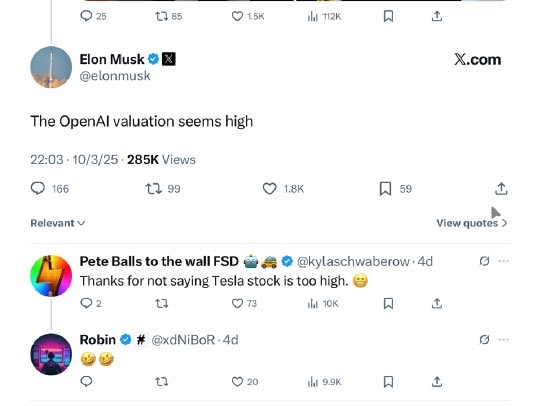
However, SoftBank's total investment is linked to OpenAI's transition to profitability. If OpenAI's parent company fails to successfully transition to a for-profit company, SoftBank's investment will be reduced to $20 billion. This is the main reason why Musk continues to use lawsuits and acquisitions to prevent OpenAI's parent company from transitioning to profitability, as he wants to buy time for his own xAI to catch up.
In less than six months, OpenAI's latest valuation has continued to grow to a staggering $500 billion, surpassing Musk's SpaceX to become the most valuable startup in history. Musk could only comment, somewhat sourly, on X, that OpenAI's valuation was too high.
Musk may harbor hostility, but OpenAI's madness also faces numerous skeptics. In just over a month, the massive investments and collaborations between OpenAI, Nvidia, AMD, Oracle, and Broadcom have unleashed the largest capital storm of the AI era.
Whether OpenAI can generate corresponding commercial returns from such a massive computing power investment remains a question. When a pre-profit startup leverages global capital markets with a valuation of hundreds of billions of dollars and forges a deep web of capital and technology transactions with chip giants and cloud service providers, the industry naturally debates whether it is witnessing the essential infrastructure of a technological revolution or a dangerous game of capital circulation.
Raised revenue cannot keep up with the cash burn
Indeed, OpenAI's revenue growth is quite astonishing. Their revenue primarily comes from subscriptions to ChatGPT, API payments from enterprise users, and the sale of customized AI solutions to companies like Microsoft. While OpenAI's current revenue still primarily comes from user subscriptions, with weekly active users reaching 800 million, it is actively shifting to a revenue model focused on enterprise AI infrastructure.
Following a 150% revenue growth last year, OpenAI's annualized revenue exceeded $10 billion in the first half of this year, and it expects full-year revenue to more than triple this year, reaching $12.7 billion. According to current plans, OpenAI aims to reach $200 billion in revenue by 2030.
However, even such a massive funding round and rapid revenue growth haven't been enough to satisfy OpenAI's cash burn. Last year, OpenAI suffered a net loss of $4 billion, and they expect that to double to $8 billion this year. To maintain their lead in the AI arms race, OpenAI has vowed to invest over $115 billion over the next five years, primarily in computing power investments such as its own data centers.
This rapid burn rate far outstrips OpenAI's revenue and fundraising pace. Ultraman has been forced to pursue financing while negotiating partnerships. To minimize capital requirements, Altman employed an innovative "investment-purchase" model for both Nvidia and AMD processor procurement agreements.
Nvidia will invest up to $100 billion in OpenAI, and OpenAI will use the funds to purchase Nvidia processors. Once OpenAI purchases enough AMD processors to drive sales and stock price growth to target, AMD will provide OpenAI with warrants for up to 10% of its shares, effectively providing a performance bonus. Media reports indicate that Altman also approached TSMC for investment, but TSMC declined.
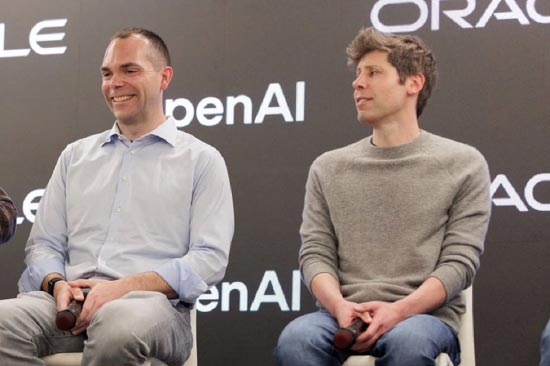
Nvidia GPUs can be offset with equity investment, but AMD GPUs and Broadcom's in-house chips require significant upfront capital investment. Furthermore, OpenAI's annual bill for cloud infrastructure services, signed with Oracle, is estimated to be $60 billion. Where will OpenAI find the funds to pay for such a large sum?
It seems Oracle isn't worried. Oracle co-CEO Clay Magouyrk confidently stated this week that OpenAI can "certainly" afford its $60 billion annual cloud resource costs. He noted that OpenAI's user growth is unprecedented, and that AI technology will have a significant impact on all industries and types of businesses.
Jensen Huang also addressed concerns about "vendor financing." He stated that OpenAI currently has no funds and needs to raise them based on the prospect of exponential growth in the future. Therefore, they gave us the opportunity to invest alongside other investors. Huang even expressed his only regret that he didn't have more money to invest in OpenAI. He believes OpenAI will become a trillion-dollar company, while Nvidia will become the first company to surpass $10 trillion in market capitalization.
Interestingly, amid concerns that OpenAI's relentless expansion is creating a capital bubble, Altman, a prominent figure involved in the company, has also warned of the risk of a bubble in the AI industry. Over a month ago, he publicly stated that he believes the AI market is in a bubble, but that AI remains the most important innovation in the long term.
Reminds me of the dot-com bubble
The current AI investment frenzy has reminded many of the dot-com bubble of more than two decades ago. At the turn of the century, investors flocked to emerging internet companies, believing they would transform all business models. They blindly drove up the market capitalization and valuations of those companies that were unprofitable and lacked a business model.
In the decades that followed, the internet indeed transformed nearly every industry, but this didn't prevent the bubble from bursting and the stock market crash. From March 2000 to October 2002, the Nasdaq index lost nearly 80% of its value, and many internet companies perished.
In fact, many industry insiders have noted the risk of a bubble in current AI investment. Alibaba co-founder Joseph Tsai noted in March of this year that the rush by many large tech companies, investment funds, and other institutions to build AI training server bases was beginning to appear somewhat reckless. Many projects were being built without a clear customer in mind.
While Tsai believes the AI market could reach at least $10 trillion, he also emphasizes that AI isn't a winner-takes-all landscape. True victory lies not in developing the most powerful AI models, but in the ability to rapidly implement and apply the technology. Tsai, like Jack Ma, personally experienced the dot-com bubble burst.
Apollo Global Management Chief Economist Torsten Slok even argues that the current AI bubble is actually larger than the dot-com bubble. The forward price-to-earnings (P/E) ratios of the top ten companies in the S&P 500 are higher today than those of the top ten companies during the tech bubble of the mid-1990s.
In his view, the current AI bubble differs significantly from the dot-com bubble in one key way: while the numerous internet startups of that era dispersed the risk of the bubble, the current market risk is highly concentrated in a very small number of tech giants, with valuations even more exaggerated than those of those early days.
But there are always optimists. Ray Wang, chief analyst at Constellation Research, believes, "From a broader AI and semiconductor investment perspective, I don't think this is a bubble. Supply chain fundamentals remain strong, and the long-term trajectory of AI trends supports continued investment."
Vivek Arya, managing director at Bank of America Securities, believes that while AI companies are locked in a race to protect their dominance or find new revenue streams, today's tech giants have much stronger financials than the dot-com companies of the past.
Top cloud service providers now have sufficient operating cash flow to support their capital expenditures. Compared to the dot-com era, when internet companies often relied on debt financing, top cloud service providers now have a capital expenditure intensity of approximately 25%, while projected operating cash flow averages over 30%.
Nvidia currently trades at a price-to-earnings ratio of 51, while its 2026 expected price-to-earnings ratio is only 29, which is "well below" its earnings growth rate. Analysts say this is "very different" from the 100-times valuations of stocks like Cisco, Nortel Networks, and Yahoo over two decades ago.
More importantly, the U.S. Federal Reserve is currently in a rate-cutting cycle, a stark contrast to previous periods of market crashes in 2000 and 2008 when the Fed continued to raise rates.

%20--%3e%3c!DOCTYPE%20svg%20PUBLIC%20'-//W3C//DTD%20SVG%201.1//EN'%20'http://www.w3.org/Graphics/SVG/1.1/DTD/svg11.dtd'%3e%3csvg%20version='1.1'%20id='图层_1'%20xmlns='http://www.w3.org/2000/svg'%20xmlns:xlink='http://www.w3.org/1999/xlink'%20x='0px'%20y='0px'%20width='256px'%20height='256px'%20viewBox='0%200%20256%20256'%20enable-background='new%200%200%20256%20256'%20xml:space='preserve'%3e%3cpath%20fill='%23FFFFFF'%20d='M194.597,24.009h35.292l-77.094,88.082l90.697,119.881h-71.021l-55.607-72.668L53.229,232.01H17.92%20l82.469-94.227L13.349,24.009h72.813l50.286,66.45l58.148-66.469V24.009z%20M182.217,210.889h19.566L75.538,44.014H54.583%20L182.217,210.889z'/%3e%3c/svg%3e)



